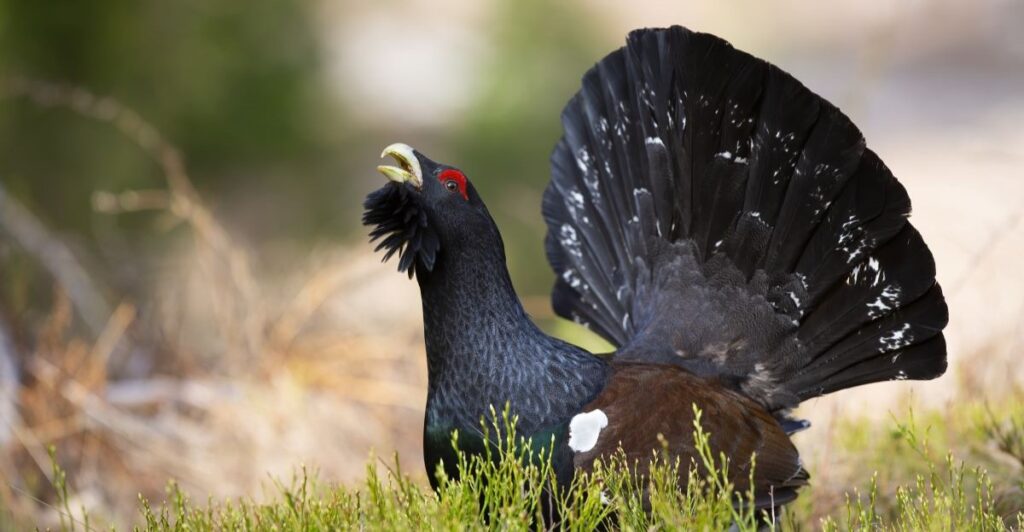
The great egg caper that could save the rare capercaillie from dying out
Researchers made fake nests and filled them with chicken eggs as part of a trial designed to help save the capercaillie, one of the UK’s rarest birds.
The capercaillie is a ground-nesting bird that, with just over 500 left in the wild, is in danger of extinction in the UK.
One contributor to its decline is the eating of its eggs and chicks by predators which include another protected species, the pine marten. Both Capercaillie and pine marten are protected species.
A team from the University of Aberdeen placed 720 artificial nests filled with chicken eggs in historic capercaillie habitats, covering some 60sqkm of land managed by the Cairngorms Connect Partnership.
Deer meat was put near the artificial nests to see if the predators could be lured away from eating the eggs. The false nests were monitored over eight weeks and had an 83% survival rate.
The University of Aberdeen’s School of Biological Sciences said the study suggested diversionary feeding could be a significant contributor to saving capercaillie from extinction.
‘A major obstacle in effective conservation management is the conflict between recovering predators eating endangered prey,’ PhD researcher and project lead Jack Bamber, from the University of Aberdeen’s School of Biological Sciences said.
‘This challenge is becoming commonplace in the era of ecosystem restoration.
‘In Scotland the much-celebrated recovery of the pine marten, a nest predator, and the conservation of one of its potential prey, the capercaillie, epitomises this issue.
‘Some often advocate for lethal predator control, which isn’t desirable for protected species, so alternative conservation interventions are needed.
‘Diversionary feeding – a non-lethal intervention strategy – is a potential solution to this conflict, but direct evidence that it leads to significant reductions in nest depredation pressure was lacking.
‘Our idea was to fill the bellies of pine martens and other predators, like badgers, in capercaillie strongholds, predicting that once full of free food they would no longer search for eggs.’
The research carried out in the Cairngorms has been published in British Ecological Society’s Journal of Applied Ecology, external.
As a result of the research, it is being rolled out by Forestry and Land Scotland, RSPB Scotland and other organisations in Deeside in Aberdeenshire.
Richard Mason, site manager at RSPB Scotland Abernethy, said: ‘Capercaillie are struggling in Scotland and we need innovative solutions to be developed and implemented quickly for their populations to recover.
‘Through dedication and collaboration, this project has been conceived, delivered, tested and rolled out on a landscape scale in less than four years.’
Read more Wildlife stories here.
Subscribe to read the latest issue of Scottish Field.
TAGS

